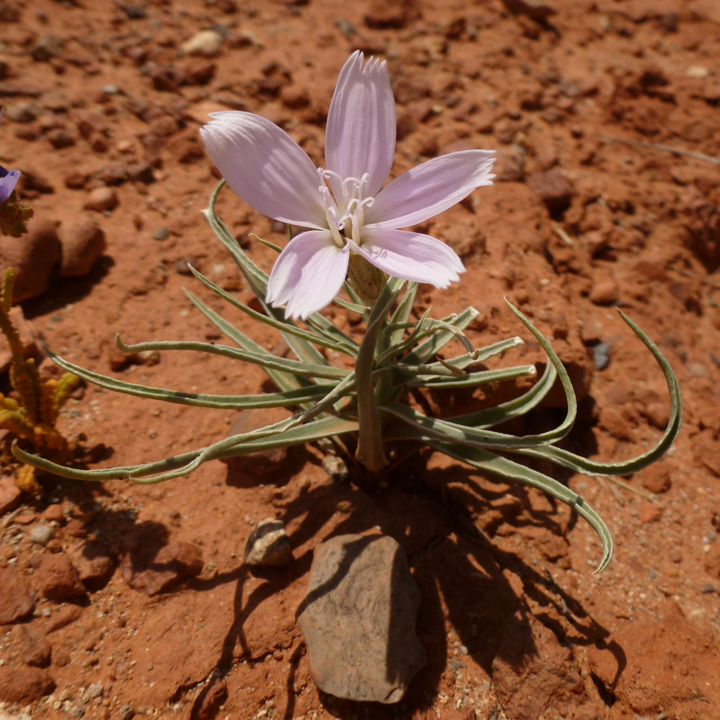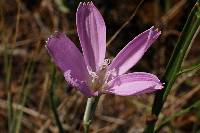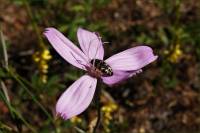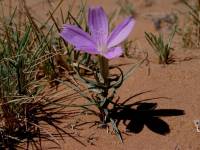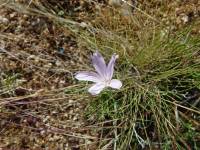Perennials 5-25(-60) cm; roots or rhizomes vertical, deep. Stems 1-5, erect or ascending, green, simple or branched from bases, obscurely striate (glabrous, puberulent or scabrous). Leaves (basal not forming rosettes, cauline present at flowering); basal blades linear to subulate. 5-150 × 1-6 mm, margins entire; cauline similar, sometimes reduced to scales distally. Heads (1-30, showy) borne singly or in loose, corymbiform arrays. Involucres cylindric, 15-25 × 6-8 mm, apices narrowed or spreading. Calyculi of ca. 8, deltate to ovate bractlets 2-5 mm, margins ciliate (faces tomentulose). Phyllaries 5-12, linear, 15-24 mm, margins scarious, apices appendaged (faces glabrous or scabrous). Florets 5-12; corollas 20-40 mm, lavender, pink, purple, rose, or white, ligules 5-10 mm wide. Cypselae (subcylindric, obscurely 4-5-angled) 10-18 mm (faces smooth or rugose, sometimes sulcate); pappi 10-13 mm. 2n = 18.
Lygodesmia grandiflora is recognized mainly by its relatively large corollas. Some variants were segregated as distinct species by A. S. Tomb; because of intermediates, putative hybrids, and associated identification problems, it is probably best to recognize these as varieties pending further investigation (A. Cronquist 1994; S. L. Welsh et al. 2003).


